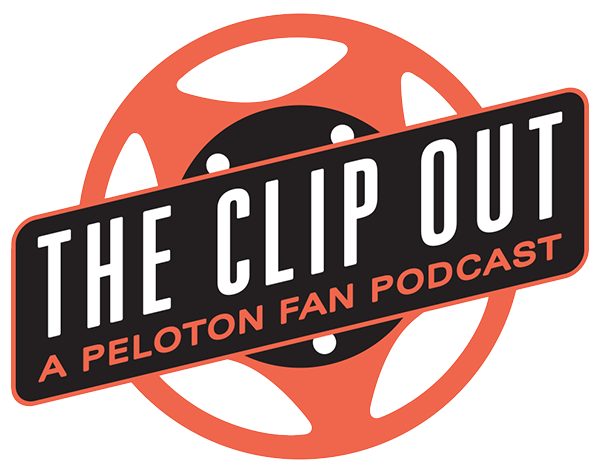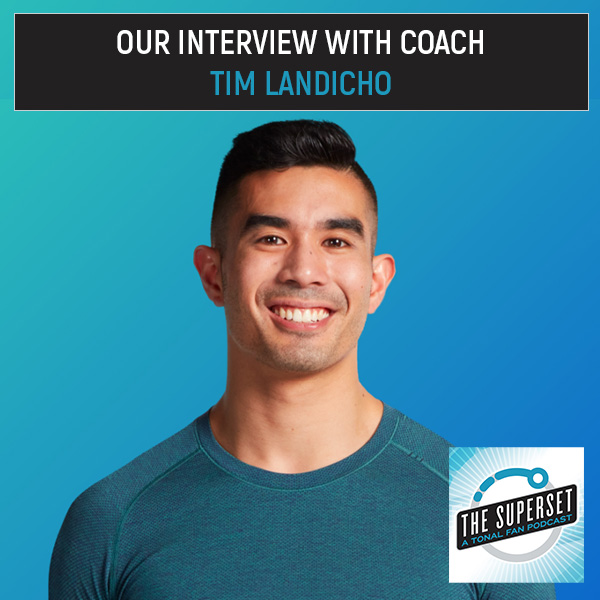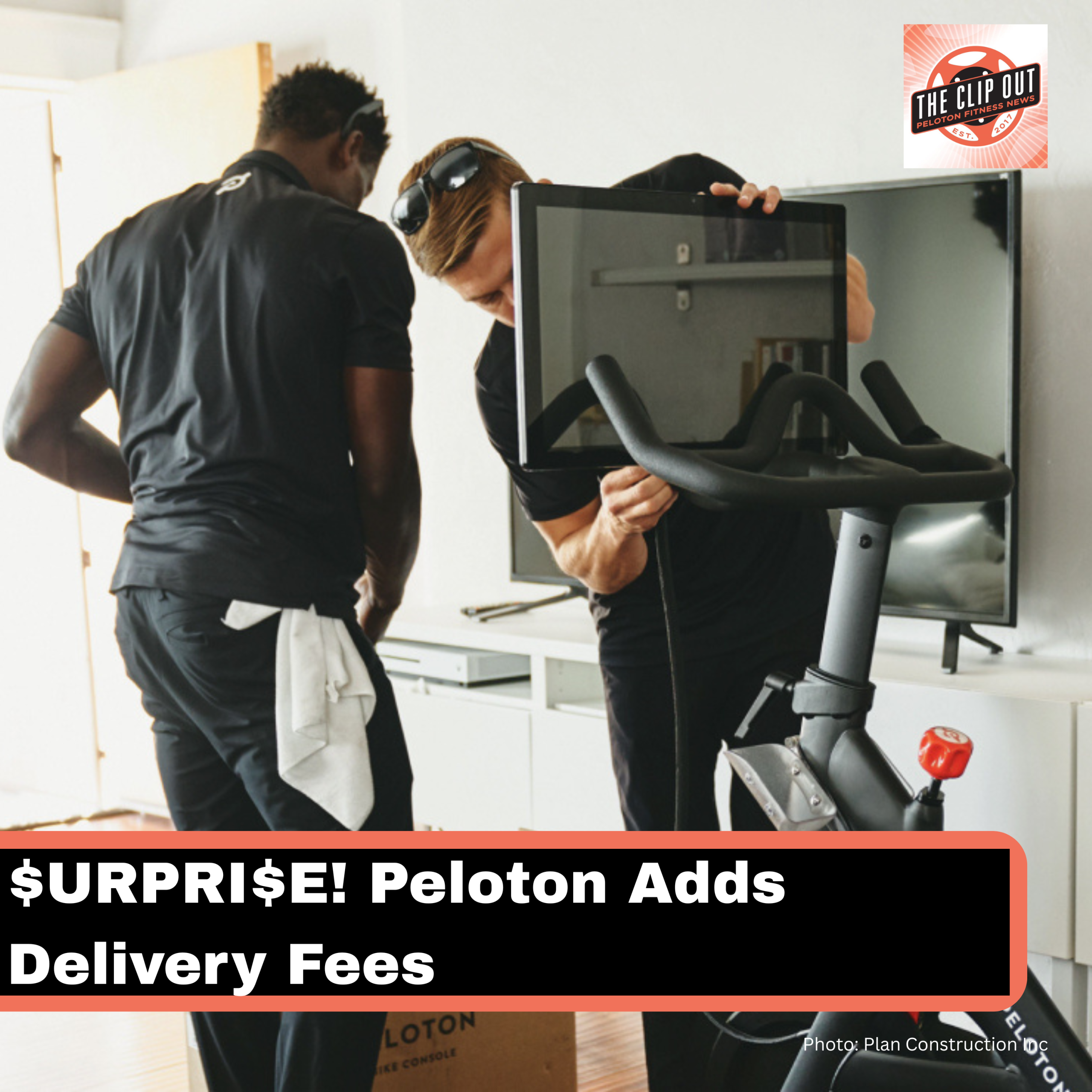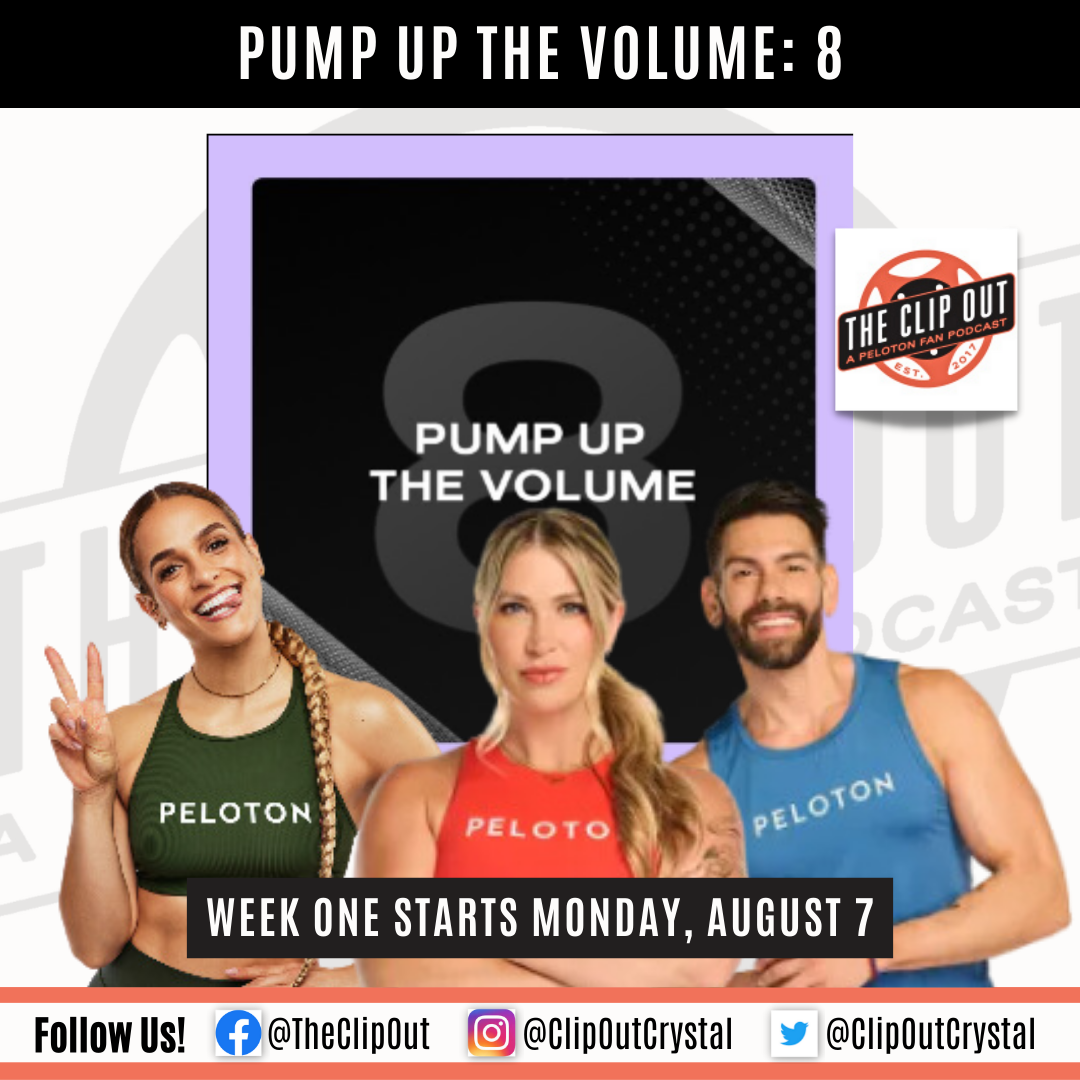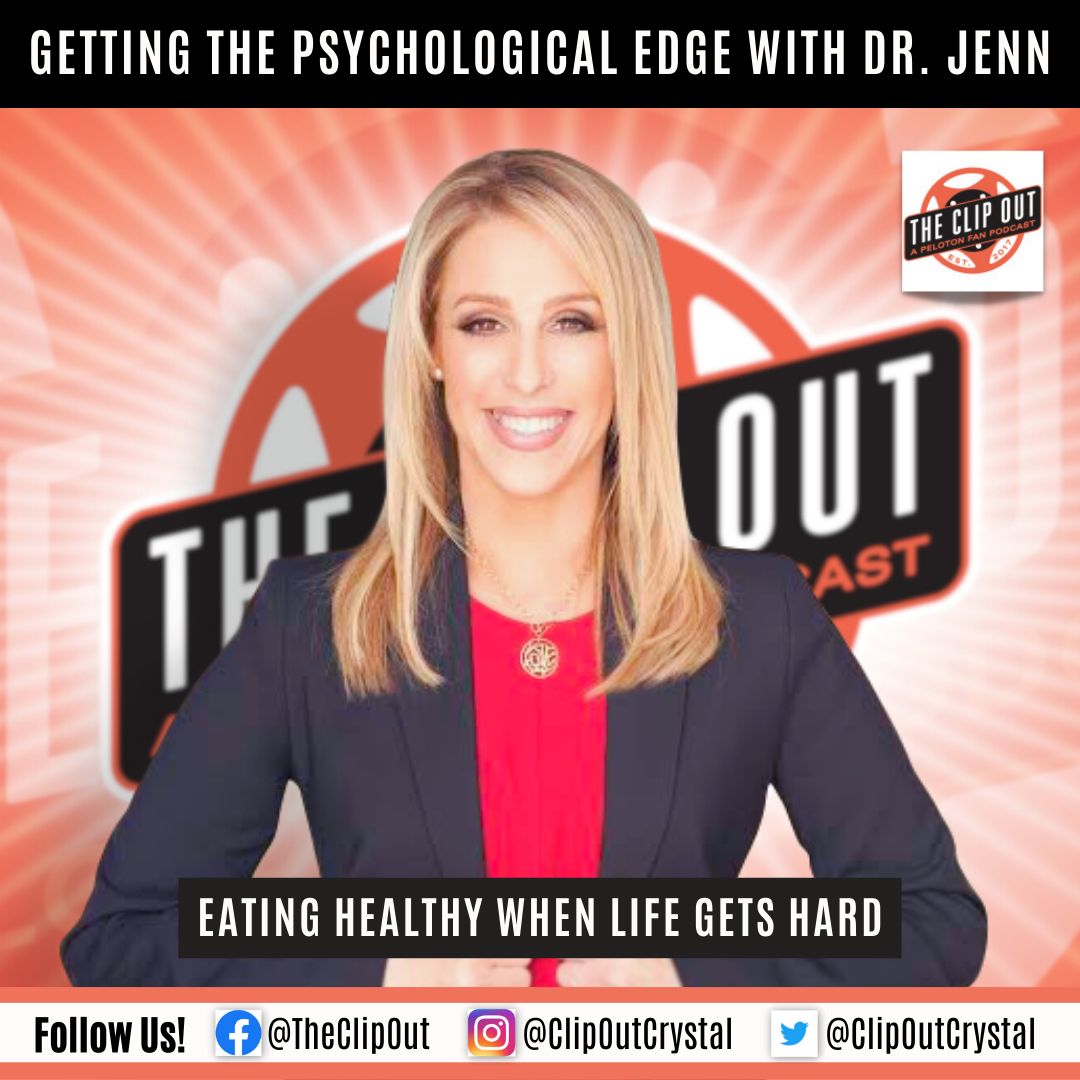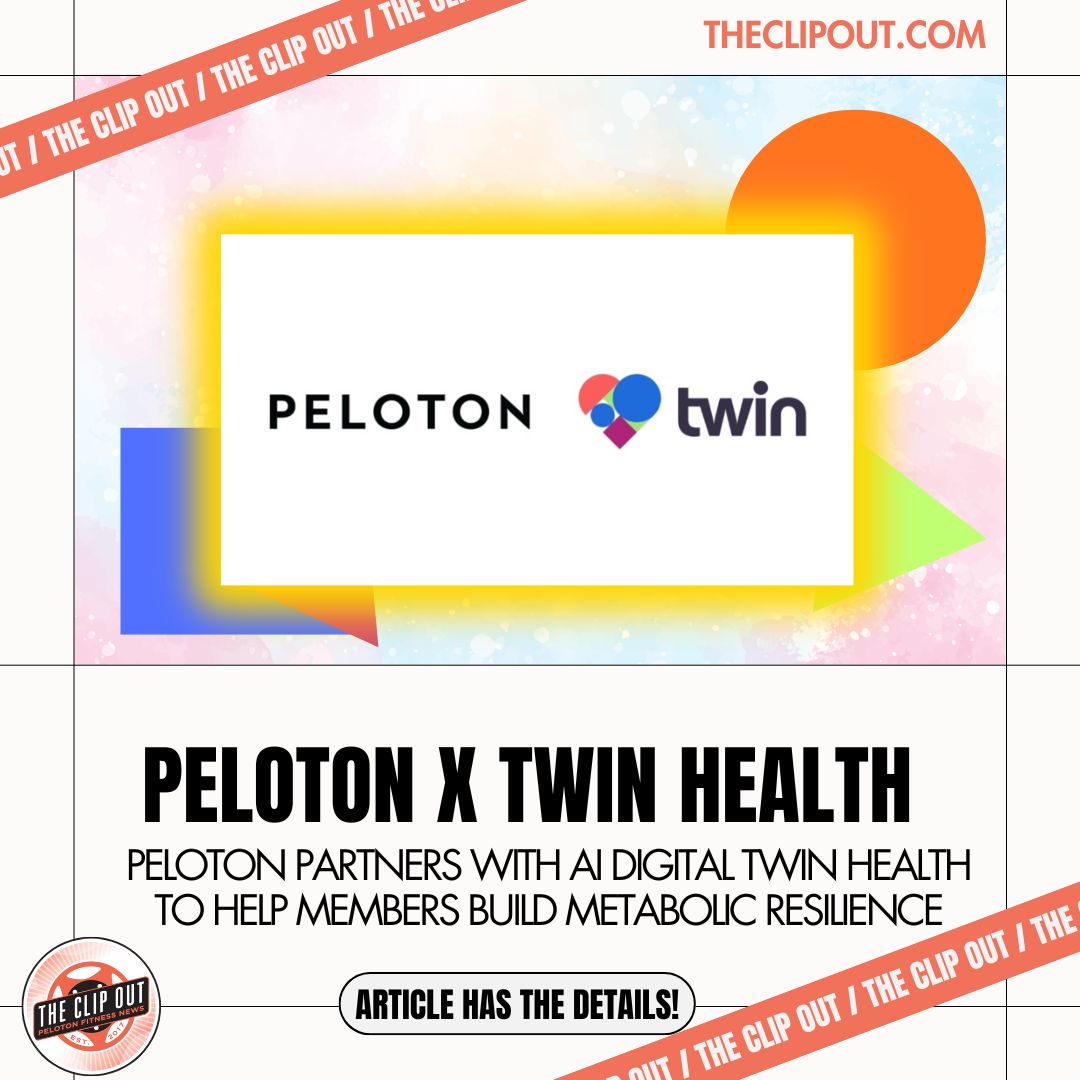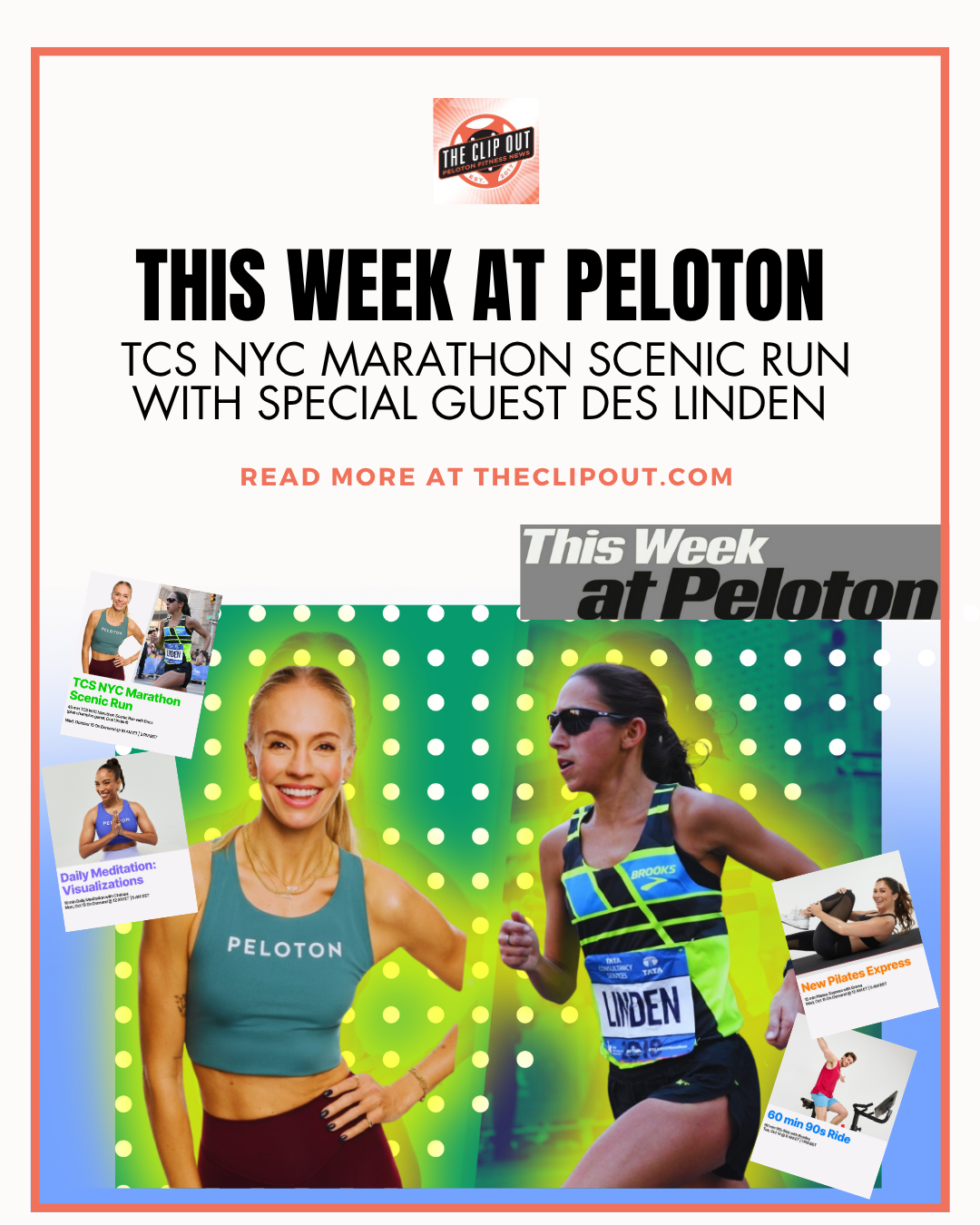Our Interview With Coach Tim Landicho
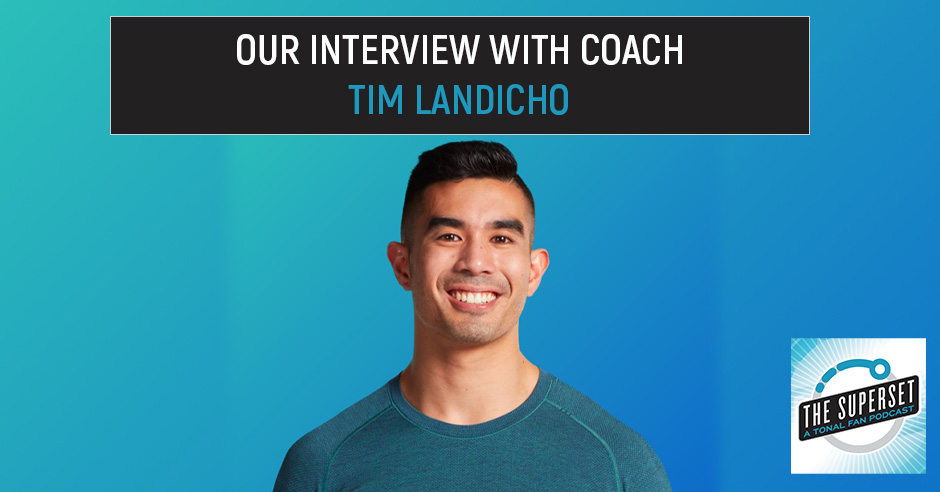
- New Content:
- QUICK FIT: LOWER-BODY STRENGTH AND STAMINA
- QUICK FIT: KILLER ARMS
- 20-IN-20: GRIT AND HIIT
- Recovery Workouts:
- DYNAMIC HIP OPENER (Stretching)
- LEG DAY WARMUP
- UPPER-BODY PULL PREP
All this plus our interview with Tim Landicho.
—
Watch the episode here
Listen to the podcast here
Our Interview With Coach Tim Landicho
Welcome to episode 54.
Shock PPL is what I’m doing when I finished up with the summer Sculpt & Shred.
Is this one of the Custom By Tonal?
Yes, it is.
Tell me what you got going on over there.
I don’t know. It’s called Shock PPL.
What does PPL mean?
It’s for people.
I don’t think so.
I think it’s Push-Pull Legs. It’s a lot of weight. The one I did, I did almost 17,000 pounds and I’m not that tough.
It was only the upper body. That’s insane. One of my tough workouts is 8,000 pounds and I know it’s all relative. Don’t get me wrong but my brain cannot absorb that you did 16,000 pounds for upper just the body.
It was 16,500. You’d think I would look better.
You do not give yourself enough credit. You look awesome. I’ve had some people say to me, “Tom got some guns going on there.” You do.
No one has said that to you.
That is not true. I have had that conversation. It was one of my MetPro clients who’s also a reader.
I certainly look better than I did. That is for sure.
You look amazing.
Thank you.
I’m the only person that matters.
That is true so I was not fishing. We have some people that read because they love Tonal and they can’t get enough of it but we have some people that read and still check out and decide if Tonal is for them. To sweeten the deal, we can save you $100.
Use THECLIPOUT as a discount code and you can have your very own Tonal for $100 less.
That’s $100 right in your pocket.
You can try it at home for free. Once you have it at home, you are not going to want to send it back. It’s an amazing, beautiful machine. I love it so much.
It’s pretty spiffy. What pre-tell do we have in store for people in this episode?
There’s new content and we’re going to revisit some of the things that exist that are important like Recovery Workouts specifically. We are interviewing Coach Tim Landicho. I don’t know how much you guys have had a chance to take classes with Tim but he is a bundle of energy and so much fun. He’s so thoughtful and deep.
It was a fun interview. It’s fun to talk with the coaches one-on-one. We’re very fortunate in that regard. Hopefully, our conversations help you learn more about them and their personalities. It’s more fun to take the classes when you feel like you know them.
They’ll make a little face or something that you’ve seen whenever they make a joke at you. You can see that with more depth that way. I love it.
Before we get to all that shameless plugs, don’t forget we’re available on Apple Podcasts and iHeart. Wherever you find a show, you can find us. While you’re there, follow us so you never miss an episode. Maybe leave us a rating and/or review. Those are always super helpful. You can also find us on YouTube at YouTube.com/TheClipOut, the name of our other show but these episodes live there as well. You can also find us on Facebook at Facebook.com/SupersetPodcast. There’s all that. Let’s dig in, shall we?
We shall.
There are all sorts of quick workouts available for people on the Tonal. Sometimes, you don’t have the time or maybe you’re not in the right head space so you don’t want to do a 45-minute or 50-minute workout but you feel like you should do something.
My favorite reason for doing shorter workouts on the Tonal is because if I’m doing a lot of running and I was doing a lot of training in 2023, it allows me to still get a workout in without trashing my legs. They can only do so much. A lot of people have different reasons for using shorter workouts but the point is there are tons of them. They have literally hundreds of workouts that are under twenty minutes.
My favorite of these are the ones that are called 20-In-20s. There are several of these programs but also there are tons of workouts called Quick Fits. I also love these. You can think of them as a workout snack because you can stack them in different ways. Let’s say that you’re like, “I just want to do a quick thing on the core.” The core is something you could always add in. I don’t care what your day was.
Nobody wants to do long core.
Ten minutes is plenty.
You don’t even have to beat yourself up for doing 10 or 15 minutes on core because nobody wants to do 50 minutes of core.
If you’re like, “I could still keep going,” you can add 10-minute arms and 10-minute legs. The next thing you know, you did a full-body workout and little chunks. It seemed so much easier. That’s a great way to keep or get your momentum going. If you don’t have it, it’s a great way to work it in. I love those.
It’s so easy if you take a day off, not a scheduled day off because there’s nothing wrong with taking days off but maybe a day off that you know in your heart, you shouldn’t have taken off. Maybe on those days, go do a twenty-minute thing to still do something and keep it in your head, or if you’re new to working out. It was funny. When I first started working out, if I saw the class was over 30 minutes, I was like, “Hard pass.” Now, I am in the mindset where if it’s not at least 45, I’m like, “Is it worth my time?” It’s also a great way to stairstep yourself into working out and building your stamina if you’re new to the game.
I also think that we should share with people some of the new classes that have hit. The first one is Quick Fit: Lower-Body Strength and Stamina. Whether you are a person who likes sports like skiing, maybe you like to cycle, run, or maybe you just want to feel better, this is a perfect one because this is going to help you have a strong lower body and that’s essential for everything you do in life. You’re going to work your legs unilaterally and bilateral. That’s perfect. This one is with Coach Tim, who we interviewed in this episode.
The next one is Quick Fit: Killer Arms.
This one is perfect for the upper body. It’s going to light up your shoulders and biceps. There are lots of reps and limited rest. You’re going to be able to stay dialed in because it’s only ten minutes and this one is Coach Joe.
Finally, one we’re spotlighting is 20-In-20: Grit and HIIT.
This one gives your legs a wake-up call in another lower-body workout. You’re going to torch your quads, hamstrings, and glutes in high-repetition sets. It’s going to build your work capacity and muscular endurance. This one is going to also include Chains Mode. Peaches will be peaching. That one is with Coach Kristina.
It’s nice to have long workouts but as it’s true with so many areas in life, don’t rule out a quickie. Something else we should talk about is Recovery Workouts, which I am bad about doing. I’m very dismissive of them. That’s a character flaw on my part.
Here’s the thing. Recovery Workouts are good not only for just obvious recovery but they’re also good again for people who are trying to build momentum. Let’s say you do a day where you’re just getting started and you did twenty minutes yesterday. Now, maybe you’re a little tired and sore from yesterday and you don’t feel like working out because you’re new to all this but if you do a Recovery Workout, you’re still moving and getting a workout in.
That’s part of how you build that momentum. It becomes a habit. It’s like brushing your teeth. You do it without thinking about it. Recovery Workouts are excellent for that. It can be anything. It can be any low-intensity exercise. That comes after a day that you worked hard. If you’re lifting heavy weights or maybe you’re a person who’s, like myself, running a lot, then doing a nice, easy bodyweight exercise or reduced weight is perfect. There are a lot of these. What other ways does Tonal have to incorporate? It’s Active Recovery.
They have a Dynamic Hip Opener, which is a fancy way to say stretching.
It’s defined as a mobility session. It combines foam rolling, dynamic movements, and static stretches to improve the lower body’s range of motion and flexibility. I know there’s a lot of you out there that are like, “I don’t have time.” The thing is that when you spend a little time doing things like this, it improves your running and cycling so it is good for you. You can even have the ability to do deeper squats.
That one is with Coach Joe. There’s also Leg Day Warmup.
This one’s perfect for prepping for deadlifts or other lower body hinging. Maybe some RDLs. This is going to warm up your hips, glutes, and hamstrings. It’s going to build up your flexibility and mobility in your lower body. If you’ve got a big lifting day, this is good with Coach Tanysha.
These and also the Quick Fit ones are great ways to sample different instructors.
That’s a good point, especially if you haven’t had a chance to try all of the new instructors. I feel like it’s a good way to get a little snapshot of who they are. That’s a good idea.
One more Recovery we want to put in front of you is Upper-Body Pull Prep.
This is also from Coach Tim and this is going to help you prepare for any challenging pulling workout. You start very slowly. It mobilizes your muscles, increases your range of motion, and then ramps up the intensity so you’re ready to go.
That’s with Coach Tim. This episode’s guest. That all comes full circle.
—
In this episode, joining us is Tim Landicho. Tim, how’s it going?
What’s up, Crystal and Tom? I’m doing well. How are you?
We’re good. Not as energetic as you are but we’re trying to keep up.
I’ll tell you this. I do not have to be in the studio so any energy that I normally have in the morning that I would be channeling towards getting myself hyped up and ready to be on screen, both of you are going to get it.
This is not one of the questions we talked about but what do you do to get hyped up? What does hyped-up Tim look like? You’ve got no coffee. What is happening over there? Is it natural that you wake up full of energy?
I’m not a huge coffee drinker but before this conversation, I do have a coffee. This is an interesting question because, to me, it’s like, “It’s my morning. Time to go to the studio.” You’re making me reverse engineer, “What do I do in the morning?” First off, a big piece for me is knowing what I’m teaching. We know all this stuff ahead of time but sometimes in the morning, it’s like, “Let me make sure it’s fresh in my head.” On my way to the studio, I’m looking at the document for the program and the class. I’m getting all of that in my body.
I’m usually asking myself, “What’s the energy arc of the class? What’s the energy arc that I want to take you as a user through?” At each point of the workout in the warmup, what energy am I bringing? In the first block, what energy am I bringing? Where in this workout is what I would consider the peak of the workout? If either of you is familiar with the hero’s journey and that mythological template of a main character or a hero going through, where in this workout is the final battle scene?
I don’t know what I would call it but I’m mapping the energetic tone that I’ll bring to each part of the workout in my mind. On the way to the studio, I’m locating in myself like, “I know what energy I want to bring. Where am I now?” That differs from day to day, depending on if it’s been a long teaching week, I got a lot of sleep or maybe less sleep than I would’ve liked. If I know where I want to go in terms of the class and I can identify where I’m at, then I can bridge that however I feel is necessary.
If I’m feeling a little groggy, I might listen to a more hype playlist or my training outside of teaching. If I’m already feeling in a pretty good mood, I might keep that rolling by thinking, “Are there any themes in my life that I can maybe connect to class?” That’s my general process. From there, one of the most exciting moments for me is when right before the camera goes live. There is this ten-second countdown that our director’s giving us in our ears. To me, that’s always such a fun and surreal moment because it feels like you’re going to blast off into outer space.
There’s a great book that I’ve been reading. It’s called The Charisma Myth by Olivia Fox Cabane. She breaks down, “What are the elements of charisma? Is charisma something you can teach?” She says that there are three components to charisma, which are presence, power and warmth. You need all three of those. She goes down a whole thing. It’s those last ten seconds before I go live.
When we first launched, I would’ve been very in my head being like, “What do I say? How do I open this?” When that countdown’s happening, I’m repeating those three words in my head. “Power, presence, warmth.” It’s my way of getting into the energy of like, “Be present. Meet the user where they’re at. Have the authority that they need so that they can trust in your leadership.” Also bring the warmth that can help someone feel like, “My time here is worth it.” I try to bask in that in those final few seconds. Once the camera goes live, then I trust myself to go with the moment but it all depends on being as present as possible.
It’s work before the workout.
It’s fun work for sure and it’s rewarding work.
Each of the coaches has the ability to bring that presence through. We feel it at home. You’re killing it, Tim.
I thought it was interesting when you reference the hero’s journey because Plyos for Power sounds like it should be a D&D campaign. It’s like you’ll meet the wizard of Schandorff and he will send you to the Kingdom of Gaia.
This should be a separate conversation but before we talk about Plyos for Power, I have always been so curious about what D&D is all about because I’ve never played it. There are people that are near and dear to me in my life who are big D&D nerds. Now that you bring it up, I am so curious.
I haven’t played it since high school or college maybe. What’s fun about it is it’s a game where you’re not necessarily competing against each other. You’re working together towards a common goal. You have one person that steers the story and then you’ll come up with solutions. There aren’t right or wrong solutions. It’s not like a video game where it’s got to be A, B, A, B, up, down, down. You can come up with crazy solutions. If the guy running the game is like, “That makes sense. I’ll let you do that,” you can then move ahead with it.
I love that you referenced A, B, A, B. You were totally Nintendo-ing it up there.
I don’t know which Nintendo you’re referring to.
It didn’t exist whenever you were that age.
Nintendo 64 or N64 will always have a place that is near and dear to my heart. One of my friends still has it when I visit back home and I’m like, “Let’s play some Super Smash Bros.”
I feel like someone from Tonal is tuning in and is like, “Will you please talk about Plyos for Power?”
To that person who is reading and begging us to talk about Plyos for Power, we can do that.
This was the program that you did. I have not tried it and I am a little scared of plyometrics. I’m not going to lie. My knees do not always cooperate. Sometimes the jumping is a little intense. I get worried about it. Do you remember the program that you could do at home like the insanity workouts?
Yeah.
Back in the day, I was doing those all the time. I remember they had so many plyometrics in it. I did something to my left knee. It’s never been the same, ever. It’s my fault for not getting it checked out, don’t get me wrong. My point is some of those jumping can be super intimidating. I’m sure I’m not the only one. What do you tell people about Plyos for Power? How do you get them past that intimidation point?
An athlete is anyone who is preparing themselves, including their body and their mind, for any sort of demands they have to rise to. Share on XYou are not the only one. When I was promoting this on my Instagram, I got a number of responses. It’s very similar. People had a little bit of trepidation on the fence and were like, “I’m excited about how you position this but also I have this. Is this the right program for me?” The whole intention of Plyos for Power is to bridge the gap between somebody who had zero exposure to it ever and a poor relationship with high-impact movements as you’ve described. Get them up to speed and break it down in a stepwise fashion so that they, at some point, are eventually able to do that with success.
Part of the reason why we came up with this was, first, we were looking at the progression from beginner, intermediate and advanced so different classes or programs. What we noticed was in a lot of beginner programs, it’s a lot of foundational stuff and movement patterns. In the intermediate stuff, there were a lot of places where these plyometrics were showing up all of a sudden, like broad jump to backpedal or jump squat. For someone who’s leaving or has one foot in the beginner stage and is wanting to put one foot in the intermediate stage, no pun intended, it’s a big jump to go from not doing any of this stuff to then being told, “Do these three sets of jump squats.” You’re like, “Am I prepared for this?”
The big value proposition of Plyos for Power is that we take what looks like from the outside a 0 to 100 approach where you’re not doing any plyos and then all of a sudden, you’re doing three sets of however many seconds of jump squats, broad jump to backpedal or skater jumps. Instead of going 0 to 100, with Plyos for Power, my goal was to break it down into what it looks like to go from 0% to 20%. Can we master some of those fundamentals? Once you got that, can we take it from 20% to 40%, then 40% to 60% and then 60% to 80%? It’s more of a gradual stepwise process.
It’s a two-week program. For people that feel like they will need more than two weeks, I highly encourage them to go through it again because there’s no downside to going through it again. On top of that, I also cover fundamentals before we learn how to do those explosive movements, which people think might only be for high-level competitive athletes but it’s my conviction that everyone will benefit from that. We can talk about that a little bit more if it goes there.
For anyone who is wanting to be able to produce those explosive movements, the first foundation that we have to lay down is, “Can you absorb force? What does it look like to absorb force?” We then break it down to, “How can we produce force after we’ve absorbed it? How can we produce force quickly? How can we produce force quickly and repeatedly?” There are all these layers that we’re baking into it so that by the time someone gets to jump squats, they know, “If this isn’t feeling good, here’s how I can regress it maybe 2 or 3 steps back and set myself up for success without going back to the beginning or feeling like I have no other options.”
I know the answer to this but for people who may not know the answer to this, why is it important for everyone to be able to do plyometrics, even if you’re not an athlete?
I realized this as I was answering the last question. I don’t want to assume what people’s knowledge is around plyometrics but for anyone who is not clear on plyometrics like, “What’s this word you’re throwing around,” we can think about it as quick explosive movements where we are training the body to get off the ground as quickly as possible.
It’s all about, “How quickly can I make this turnaround between the time I make contact with the ground, absorb that force and then turn it around as quickly as possible to produce that force?” It’s all about, “Can we be explosive?” To your question about, “Why would somebody need to do this if they’re not a high-level competitive athlete?” If we’re thinking of that context, it’s pretty obvious. You want to be able to outsprint and outjump your opponent.
This is one of the populations that I have noticed throughout my career that needs it the most and is simultaneously the most scared of it, which is where I see my role as a coach come in. It is the aging population. As we get older, it’s our ability to produce power, which power is strength, time and speed. We all want to build a base of strength but the speed at which we can produce that, our ability to do that declines as we get older.
Part of what that plays into is as we get older, as we get into the 50s, 60s and 70s, people who have decreased power outputs are at an increased risk of falling, slipping, losing their balance and not being able to catch themselves or normal activities of daily living. Maybe you are chasing your kid or grandkid. There are still things in your life that are going to demand your body to still have to respond a certain way. If that’s not in place, you’re at risk for all these things.
We know that for the elderly, having a fractured hip from a fall is one of the catalysts. I hate that this sounds so morbid but it’s the reality. It’s one of the catalysts that leads you to a slow decline to death because then, once you have a fractured hip, if you’re already inactive as is, you go further into inactivity. If you need to get surgery, there’s the potential for lots of complications. If you already have comorbidities, things like diabetes and high blood pressure, those get exacerbated.
One of the key things is being able to keep ourselves up, as basic as that sounds, especially for aging populations. Another component of this is bone density. Bone density for anyone who’s not familiar is how strong your bones are. When we look at the infrastructure inside of our bones, how strong and how much integrity does that have? When we can develop not just strength but the ability to produce that force quickly, we add that element of speed. Quite frankly, we have stronger bone density so we’re at lower risk for fractures and things like osteoporosis.
There are so many benefits for people who aren’t high-level athletes. The argument that I would make is this is a conversation that’s been going on in my head. How even do we define an athlete? Maybe in a lot of people’s minds, an athlete is someone who competes. That’s a valid definition. As a broader definition, an athlete is anyone who is preparing themselves, including their body and mind for any sort of demands that they have to rise to. All of us throughout the course of our lives will continue to have demands that we have to rise to, whether that is physical or mental. All of us are athletes in some capacity or another.
It’s interesting you were talking about the importance of plyometrics. First off, when you were listing people who could need it, the first thing that came to mind as someone who could need it would be Chumbawamba because they get knocked down and back up again.
If you were trying to look younger, it did not work though.
Let me make myself sound even older when we talk about the effectiveness of things like plyometrics. I started thinking, “Who are the most famous people I can think of that are the oldest or achieved exceptionally old age?” The first person that came to mind was Dick Van Dyke, 97 years old, still alive and kicking. Mickey Rooney got to the early to mid-90s. Rita Moreno is still working and she’s in her 90s. Angela Lansbury died at 97. What do they all have in common? Dancers. Every one of them has a background in dance.
That’s anecdotal but not only did they live to be very old but they were also able to function at a very high level deep into their old age. Mickey Rooney and Dick Van Dyke were both in the Night at the Museum franchise. That’s not that long ago. Dick Van Dyke was on The Masked Singer. Rita Moreno was in West Side Story.
I feel like this is all coming together. I understand why you’re so into plyometrics because you have a dance background.
That is my whole agenda. That’s why I got into dance because I’m trying to live until I’m 95.
It’s not just living until you’re 95. It’s living until you’re 95.
I would like to be as mobile as possible for as long as possible. I was talking to somebody and we were talking about goals. She was saying her goal was not to have a six-pack. Her goal was like, “I want to be able to carry groceries and live on my own when I’m 90.” I was like, “Yes, I get that.” Tell us a little bit about your dancing background while we made this dancing connection. We’ll then get back to programs.
A lot of what you said took me down differently. There are so many different ways you could take this but as far as dance, at this point, I very much consider myself a recreational. Does being fit help? Yes. Does having athletic qualities help? Yes. It’s a thing that I enjoy not having to monetize or pursue professionally in any way. It’s not that I don’t like fitness anymore because I monetize it but it’s when you’re passionate about something. Especially if it’s your mainstream of income, your relationship to it shifts.
That’s not to say that I resent fitness or anything but dance for me is an escape. It’s 2023. The year when I start was 2012. I never had any formal training. I never took ballet classes or these foundational things. In college, I had a group of friends who were all dancers and we were in a dance crew. I would constantly watch them and hung out with them, eventually learning from them. That was my introduction to that rabbit hole.
Throughout college, we would perform at different events like sporting events. Post-college, I wanted to stay in touch with this thing that I found that I loved. I would keep taking different types of classes like hip-hop classes or whatever have you. I don’t know how else to describe it other than it’s pure love. I’m sure if an opportunity comes around where it’s like, “Do you want to make money off of this gig,” I wouldn’t say no. I would be open to it but at this point, it’s something that I do because I love it.
There are times when I get home and either it’s a long week, it’s a way for me to get out of my head and be in my body. Feel my body, be in tune with my senses and feel the ground beneath. As someone who has experienced anxiety for a long time so much of how I’ve learned how to deal with anxiety is to not out logic the thoughts that are happening but to drop out of them. Be like, “What’s present now? What’s in my body now? What am I feeling now? Look around. Listen to the music.” For me, it’s very much that.
It so happens that the athletic qualities that you develop from training very much enhance your experience of that. I love thinking of dance as this intersection between being an artist and an athlete so it’s art and athleticism. If the art is what communicates the emotions, the message and all of that, I need to have a clear and sharp canvas if I want to convey all that to the best of my ability. The artistic expression in my mind is contingent on how fine-tuned can I get my canvas, which is my body.
Dance is an intersection between being an artist and an athlete. Share on XWhen I look at my training, I have other goals outside of dance but I also look at training as a way to enhance. Tom, it was you who said that it’s not just about living until you’re in your 90s. It’s about living and having this full experience. If we take that big idea and boil it into dance, the more control I have over my body, the better I can balance on one leg and the better I can sustain different level changes, whether that’s in a half squat position. The more quickly I can get off the ground, the more satisfying my emotional experience dances. It’s very much this bridge of it’s a physical practice. The more you can finetune that, the more you reap from the non-physical aspects of it as well, emotionally and mentally.
I thought it was interesting when you were talking about how you deal with anxiety. You don’t out logic it. You just remove yourself from the situation psychologically for a minute. It’s interesting because I do the exact opposite. I am like, “I can outthink this.” Ever since I was a little kid, if I saw something scary on the news, the first thing I thought was, “That’s on the news because it’s uncommon.” News, by virtue of definition, is different information that you don’t get every day. If this is happening, it must be unusual or it wouldn’t be news. Therefore, it’s unlikely that I’ll be caught up in the fall of Saigon.
How impressive it is that that was your thought process as a kid. I don’t know that I would’ve ever thought that as a kid and be like, “This is uncommon.” I’ve been like, “That’s scary.”
How did you find yourself as a professional fitness instructor?
I shouldn’t say by accident. I knew this from late high school going into college. I was pretty set on wanting to go into physical therapy so much. I don’t think this is that uncommon of a trajectory for fitness professionals. I had a bunch of injuries and pain that I worked through in college. I fell in love with learning about my body. A lot of fitness professionals get into it through that avenue.
When I got into college, I was very much set on going the more clinical route so I wanted to get a doctorate in physical therapy after I got my undergrad degree. I knew that I had to do either a science major or get my prereqs. Somehow, my science prereqs and other things like that. I did that through undergrad. I was fully convinced that I was going to go to physical therapy school.
After I graduated, I got my first job at a physical therapy clinic. I don’t say this as a knock on the physical therapy profession at all. I know tons of brilliant physical therapists who want to get people back to training but it was the business model of this. I couldn’t articulate it at the time. In hindsight, it was the business model of the place that I was working at where, 1) I didn’t feel super impactful and, 2) It made me zoom out and look at the healthcare system as a whole. I started to feel a little hopeless about it.
While I enjoyed getting to interact with patients and I very much still enjoyed learning about the human body, I started to feel like my soul was dying there and it wasn’t the best use of my skillset. While I was there, I had already put in an application to my top physical therapy school. I decided to also apply to this strength and conditioning internship because I was like, “I don’t see myself staying at this clinic, this strength and conditioning internship.”
It was rated the top training facility in the country by Men’s Health Magazine. I had been doing some research. The way that they ran it, I was so into it. The physical therapist on the team who co-owned the facility had such a cool way of integrating his practice with high-level athletes getting more general population clients back to doing what they loved without getting them trapped in this healthcare model.
I applied for that. I got in and then I went there. I loved it. I learned so much about training and I would consider that to be the beginning of my fitness career because I fell in love truly with the art of coaching. I was learning both the nuances of the technical side, physiology side and biomechanic side of exercise but also learning how to convey that on a human-to-human level. I met so many clients there with different goals and skill levels. While I was there, I got my rejection letter from the physical therapy school.
The crazy thing is I remember exactly where I was when I got it. I remember feeling this big hit to my ego but then getting over it relatively quickly. I called my mom and then we talked about it, told her that I didn’t get in and then ten minutes later, I was like, “I can do whatever.” Physical therapy school would’ve been three years. I had already mapped it. I was like, “After this internship, I’ll be in school for three years.” It was at that point where I was like, “I have no kids, significant other or pets. I don’t have a full-time job lined up after this internship so I can do whatever I want.”
I started to ask myself, “Tim, what do you want to do?” I was like, “Let’s go to New York City because it sounds fun.” Long story short, I got plugged into a gym there and connected in large part because of my references at this internship. I thought I was going to be a trainer part-time while I applied to PT school again. The longer that I went through training, in that first year, I was like, “I’m going to keep doing this.”
I kept doing it and kept pushing off of the physical therapy reapplication. Until a certain point, I was like, “I don’t want to go back. I love what I do.” It felt like such a good fit for my skillset. I felt I was bringing every skillset and everything that I enjoy to the table. Even being at Tonal, it still very much feels like I’m in my element. This is exactly where I’m supposed to be. It’s a weird roundabout way of getting here but that’s how life works.
You think you’re headed down one path, then life happens and it turned out to be for the best.
My son’s getting ready to go off to college and I keep trying to explain that to him. “You don’t know. These things that look like failures at the time sometimes lead to your best successes.” Off the top of my head, Jim Carrey, Donald Glover and Aubrey Plaza, do you know what they have in common? They all crap the bed on their SNL auditions. They all auditioned for SNL and didn’t make the cut, which is mystifying. How does Donald Glover not get on it?
You would think he’d be a natural for that.
Jim Carrey. That show is tailor-made for people like that. How did they not get the go-ahead? They didn’t but still found a path to success. There’s more than one way to get there.
What you described and what you’ve been telling your son is something that I try to remind myself. If we loop it back to anxiety, sometimes my brain will go, “What if this doesn’t work out? What if?” I’m like, “Tim, years ago, you would’ve had no idea that you would be doing what you’re doing now. It is different than what you had envisioned and it’s way better.” I constantly try to remind myself of that. It’s such a good reminder.
There’s more than one way to get there. Also, you don’t know where there is.
Tonal didn’t exist when you started being a dancer. It wasn’t even thought of.
I always think of it like Frogger. This is the lily pad I need to leap to. That lily pad wasn’t there when you took the leap. Back to plyometrics, I’m good.
Going back to programming, you and Tanysha had a little smash-up. You had a little class together. How did that go?
It was so much fun. I adore Tanysha. Zooming out, I love our coaching team. As a team, we have such good chemistry but Tanysha and I have so much in common. I have this one-on-one relationship with all the other coaches where I could say, “This is a defining quality of me and Joe’s relationship and me and Kristina’s relationship.” Just to pull back the curtain a little bit, the process for making these tag team promos that we promote on Instagram was largely on us as the coaches to take charge of ideation and then loop in the producer-director if we needed some assistance.
Tanysha and I hopped on FaceTime. We were like, “We should talk about this. Our deadline’s coming up.” We FaceTime each other and we’re like, “How do we make our promo something that feels true to me and you and our dynamic? What do we both love? We love music and dancing. We love the same type of music.” She and I are both very big on 2000s hip-hop and R&B. It’s surreal.
We were also in the first round of tag team promos, which I loved. I did mine with Ackeem in the first round. She and I had a lot of fun scripting our promo video. She and I were like, “What if we mix the scripting? What could we do without scripting?” We were like, “What if we vibed out to some Sierra?” “That’s it. That’s the idea.”
It was in our hair and makeup room. We set up this camera and we’re like, “Let’s play this music. Let’s take a bunch of takes of us vibing like we’re at a block party and then string it together and put text over it.” It was simultaneously one of the easiest. Just because it felt so organic, it’s one of the easiest projects I’ve had to put together. It was super fun. It was a lot of fun promoting it with her. Even when we were filming, she and I have so much organic chemistry that we were bantering left and right.
Fitness is not really enjoyable at all times. But what’s important is finding a way to make it as simple and straightforward as possible, with fewer barriers stopping you from doing the work. Share on XIt was a hard workout but for a second, I got pulled out of it and I was able to keep pushing through because I was like, “That’s so much fun.” It’s so much fun going back and forth with her. I was telling someone at this studio, “It’s almost like you took a conversation that Tanysha and I would normally have in the hair and makeup room and made us do burpees while having the conversation.”
It came across in the promo that you guys were just having fun and I liked that. It made me excited to take the class. I haven’t had to take it yet but I’m super excited to because you guys seem like you were having so much fun. I wanted to join in. I was like, “I want to do that.”
I’m glad that was the vibe. A lot of people are like, “I want to be in.” I’m excited for you to take it. It’s not easy. Tanysha and I texted each other later that night. We were like, “How are you feeling?” That class did a number on both of us but we’re doing fine. Be prepared to work but it is a good time. We did an Instagram live before we went live on Tonal showing a little bit of the behind-the-scenes process of, “This is what it looks like about fifteen minutes out from us going live.” Someone tuned into the live and was like, “Do you guys have a playlist?” We kept calling it a party. We’re like, “Join the party.”
She and I were working on this. After we finished, we were like, “We need to create a playlist.” It’s going live. I’m finishing my contributions to this playlist and I’m going to share it in my Story and be like, “I made this playlist because it was requested.” It’s a playlist of workout jams that very accurately reflect our energy and vibe. I’m excited to share that and it was a good time.
That’s a great idea since so many people sync their music when they use Tonal, instead of using the one that’s baked in.
That’s a good option. We can pull up your playlist and do that while we’re doing the class. I love it.
I’d be curious for you too. I held onto some of my private one-on-one clients when I first started and then I realized that I wanted to pour all my energies, at least while I was still new into Tonal. One of the things that we don’t get as coaches, at least that I don’t get now that I don’t have this very small handful of one-on-one clients don’t have them anymore, is this real-time feedback. If I’m in a training session with a client, I’m able to see in real-time, “My words are landing this way. That clicked for them.” I feel like being on Tonal, it’s a little bit more of a lagging indicator.
I’ll teach a class, do the best of my ability and stay as present as possible but then it’s not until someone tags me in a Story later that I’m like, “This cue resonated with somebody or someone DMs me later.” I would be curious for you both because when I was getting ready to go on here, I was looking at your guys’ Instagram. First of all, I love what you’ve created, especially in the digital fitness space. It’s the beginning of this phase of building an online community of people who are like, “There are more options.”
There are more people ever doing digital fitness, whether that’s Peloton, Tonal or something else. I’d be curious. What have you two found most valuable? You could answer this in terms of digital fitness at large, whether it’s a certain factor or component. You can answer however you want but what do each of you find most useful or most fun about this digital fitness experience?
Specifically Tonal, I love the fact that I feel like I can do the work. As a person who’s always been super intimidated by the gym, weights are always scary to me. Being able to get into weights at home allowed me to feel like I can do this. It empowered me to be able to have freedom. I don’t have somebody staring at me or judging me because I picked up the wrong weights or I’m not using it the right way. In general, all of the connected fitness space has been about me being able to do it at home on my time with what works for me and not having to feel intimidated by other people.
That’s how it started but then it also has evolved into the community at large. I come from a place of being a very reserved and buttoned-up project manager. I’m in my head and I get very nervous around people. Having that flipped around and having this amazing ability to talk to people from all over the world, that’s been another huge part of connected fitness for me. It’s also pushed me into things I never thought I would do. I never ran more than 1 mile in my life until I found Peloton and then I found all these crazy people.
I say crazy in a loving way. They were like, “We’re going to go do this half Ironman. You should come to do it with us and you can do this relay.” The next thing I know, I was training for a half marathon, which I’d never run before. Riding a road bike outside and doing all these things has pushed me into it in a way that I never would have done going a traditional route.
Congrats.
Thank you.
For me, when you say what’s the most fun, none of it. I hate exercising and everything about it.
It sounds like I hate you.
I do not get the enjoyment aspect of working out in the ways many people do. It is not my thing at all. I didn’t start working out until I was almost 50. For future reference, this is the part where you’re supposed to go, “What, 50? I would’ve never guessed.”
You didn’t give me the chance. That was a three-second delay. I was about to ask.
Two and a half seconds is too long.
I don’t do Peloton. I only do Tonal. What I like about it is that the dots are very close together. I do not know what I’m doing. Many times, I don’t even know what I’m doing after I’ve done it. I can’t tell you how many times I’ve come back upstairs from working out and Crystal’s like, “What did you do?” I’m like, “I have no idea.”
He’ll pull over this thing where I moved my hands over my head.
I have all my names for the moves so she has to interpolate what I mean when I’m like, “I did the Wolverine. I did the dog pee on a fire hydrant.” I do like the fact that I don’t have to think about it because I wouldn’t know what to do if I was left to my devices. I don’t want to know what to do. It doesn’t interest me. I want to do it and be done.
I’m very religious about I do programs because I don’t want to come down and think about it or hunt for things. I’ll spend ten minutes and then be like, “Screw it,” and walk away. I pick a program. As soon as my program is done, I pick my next program. That way when I go downstairs on Tonal, I have to hit next. I want as few barriers to my workout as possible because, at the end of the day, I don’t want to.
The cool thing is that it allows us to not have barriers. That’s amazing because even when we go on vacation and we go to a hotel, they have weights there. Tom’s done enough of this. He could in theory go to the gym but he hates it and he doesn’t even want to be in there. He still goes back to the hotel room, finds something on Tonal and then does something like body weight. He cannot stand going to the gym.
I walked into the gym one time and she was already in there working out. I was like, “Hard pass.” I went right back out.
I was like, “Where did you go?”
A lot of times, people must be reminded that fitness is a series of skill sets. Share on XThat is the anxiety I cannot logic myself out of.
I love and resonate with what you said about eliminating as many barriers as possible. Talking to you is such a good reminder because as a fitness professional, this is why I was like, “You can call fitness people crazy.” Quite frankly, we don’t think in the same way with a non-fitness or someone who maybe hasn’t had fitness as a background. I feel amazing when I go for it. It’s not that I always want to do it but sometimes it’s so useful to hear the hard reality of, “I am doing it. I’m super consistent but I still hate it. It’s still not my favorite thing ever.”
I love the honesty of that and you being like, “This is what it is with me. I’ve accepted that I don’t enjoy it nor do I care why but it’s important enough that I’m going to find a way to make this as simple, straightforward and with as few barriers to entry as possible so I can check in, do the work and be on with my day.” I love that so much.
I don’t enjoy doing it but I enjoy the results. The real challenge is there’s a big lag time between when you start doing it and when you start truly seeing results. Luckily, I force myself until I could see results that were undeniable. I don’t want to lose where I’ve gotten.
Don’t let him fool you. He’s getting built. Legit. It’s pretty cool.
How dare you wear a hoodie to this and deprive us of being able to see results?
Privately, he will show off his triceps. He’ll be like, “You want to fill my triceps?”
I’ve got one but I’m a legit snack.
Tom’s like, “I’m not a snack. I’m a meal.” At least in conversations with myself and when I was working with a lot of clients and more like a one-on-one, I still think about this as a Tonal coach. How do I get people to the point that you described, which I like to call the point of no return? It’s the point at which somebody sees something undeniable. It could be a combination of a number of things. It could be the way they look or feel, the way their clothes fit, the way they move better and feel more athletic. Whatever it is, there’s a certain point where somebody looks at all of that evidence. That’s what it is. You’re generating this evidence for yourself to then show yourself, “I am this type of person.”
At that point, I know a very popular book, James Clear’s Atomic Habits. He talks about how one of the main drivers of habits and habit change is you have to switch your identity. He talks about the difference between someone who says, “I’m trying not to smoke or quit smoking,” versus someone who says, “I’m a non-smoker.” The person who identifies with that is someone who can more easily align their actions in a way that moves them towards their goals because it’s part of who they are. What I love about what you described is you stuck with it long enough to get to that point of no return where you could see tangible evidence.
Someone can’t take that away from you. It’s not a $100 bill that someone can run by, snatch and be like, “I got it.” People can’t do that. That’s what excites me so much about fitness. Is it easy? No. Is it always pleasant in the moment? No. Is it an opportunity for you? We’re talking deep cellular level. We are shifting our body’s physiology. It’s an opportunity for you at a deep level to change how you see yourself. If you stick with it long enough, you do get to that point of no return where you see all this evidence and you’re like, “I am someone who exercises consistently. I am an athlete.”
Crystal, to your point, you’re doing all this stuff and you’re like, “I am an athlete.” That’s an identity for you. Once you can get to that point where the identity is something you embody, then to your point, Tom, the actions become easier because it’s like, “How do I act out of line with that?” I’m someone who does identify as an athlete so it’s weird for me if I don’t hit my protein goals in a day or I go a couple of weeks without training. You get to this point where doing the hard thing becomes the easier thing. I love what you shared, Tom.
Thank you. In my head, I was back to when we first started podcasting. The first few times you do a show, you feel like an idiot sitting in front of a mic and you don’t even know if anyone’s going to listen to it. It feels like pretend but at a certain point and I don’t know when that point was, it shifted to, “We’re podcasters.”
It’s so good because that’s true across all skillsets. As you’re saying that, I can see where you’re coming from. It’s weird listening to you say that with both of you with these very professional microphones. Both of you have this presence where I’m like, “They’re podcasters.” When you were saying that, it made me think of when I first started putting out fitness content in 2019, I felt the same way. I went through these weird mental dips where I was like, “Is anyone even listening to this stuff? Is this even making an impact on anyone?” There were a lot of times when I felt a lot of embarrassment about being like, “Why am I putting myself out there in this way?”
The same thing as you. It was a series of moments where somebody would reach out and be like, “I love this.” At a certain point, I was like, “I’m a content creator. I create content.” That’s so true across all skill sets, whether it’s learning how to drive or ride a bike. What people get is something that I’ve found over the course of my career as a coach. A lot of times, people need to be reminded that fitness is a series of skillsets. It’s not something that you’re either born with or not.
To your point, Tom, you didn’t start working out until you were 50. This is where I say, “You’re not 50. You’re like 23. What?” To your point, someone could see the first 50 years of your life and be like, “This guy’s not cut out for it.” However, you started and kept going. Like anything, it is a series of skills. All the skills like proper form, knowing how to push yourself at the right intensity. Not too much, not too little. With nutrition, it’s like, “How do I craft a meal that serves my goals? How do I stick to my goals when I’m being social?” There are all these little sub-skills that fall under this big umbrella of training, fitness and nutrition.
When I see people getting stuck and feeling demoralized and demotivated, I take them back to, “How’d you feel when you first started biking or driving?” When a baby is learning how to walk and they keep falling, do you think the baby’s being like, “I’m so stupid. I’m not cut out?” Even though they don’t have the words for it, what’s happening in that baby’s brain is they’re taking each and every fall and recalibrating in their mind, “My head is huge and it made me tip forward. Maybe I will keep myself more upright.” It’s a series of iterations. That’s why I love what you described.
That goes back to a throughline of my brand. The hashtag I use is #ImperfectlyRelentless. The phrase that I say is, “Showing up imperfectly but relentlessly.” To me, those two components are so important because when you take the pressure of perfection away and allow yourself to show up to the best of your ability, even if it’s not subpar just yet and I say yet because you can get there, you allow yourself the permission to show up imperfectly exactly as you are but you don’t stop showing up and you keep doing it.
You keep showing up relentlessly. At a certain point, those iterations build on each other and you have no choice but to learn from them and start to iterate in new ways. There’s this point where the skill starts to click and once the skill clicks, the identity clicks. It’s this whole chain of events that you’ve crossed the point of no return. I love that whole spiel that you started by describing it. Both of you are phenomenal examples of that. It’s even more powerful coming from stories like both of yours.
It’s not to discredit high-level athletes or people who have been athletes since they were kids. There is something extra impactful for somebody to be able to see Crystal or Tom and say, “They didn’t start until later in life? They are crushing it. I can do that too.” I got goosebumps thinking and talking about it. Both of your stories are so good but there is something so real about that that someone can connect to and it’s attainable. This is why I’m such a big fan of what both of you do, the stories that you have and how you’re fostering this community.
Thank you.
When you were talking about having to work out that subpar, I always tell Crystal, “The ones where you feel like you didn’t do the best, ultimately are the most important ones.” It’s because those are the ones that you could have not done at all. Those are the ones that move the ball forward because you could have instead done nothing.
You get stronger in your mind, even if you didn’t do the workout to a typical day’s ability. The fact that you did it still makes you stronger in your mind and that’s important.
When you say you get stronger in your mind, you show yourself that you’re a certain type of person. I want to call this out. You self-corrected. You were going to say, “Even though it wasn’t your best,” but you shifted to, “Even though it’s not a typical day’s ability,” what I love about this is your best fluctuates from day to day. Here’s a thing. Anybody can show up and crush a workout when the stars are aligned, they’ve had nine hours of sleep, they are perfectly fueled and there have been no conflicts at work or with their family. We know that that was the case.
If all of those stars were aligning all the time, everybody would be in shape and that’s not the case. What it comes down to is, who’s willing to show up when the stars aren’t aligned and conditions aren’t optimal? Not only who’s willing to show up but how do you choose to show up? It’s so easy to show up with your best effort when you’re feeling good but how do you get yourself through some of those subpar or tougher moments? For lack of a better phrase, those are character-defining moments and moments where you get to show yourself like, “I’m this type of person. I am an athlete. I am XYZ,” fill in the blank, however you aspire to identify. That’s an opportunity for you to show yourself that. I love all that.
It fits very well with your motto, “Imperfectly relentless.” I love that.
It's easy to show up with your best effort when you feel good. But getting yourself through tougher moments are character-defining moments where you get to show yourself. Share on XTim, thank you so much for taking time out of your day. We probably went way past the allotted time. but we appreciate it.
All good. I love this conversation. To go back to your point about the whole thing of how’d you get into fitness, it’s stuff like this. As soon as we get off of this interview, I’m buzzing with energy. Not because I had this coffee but because there is something so dynamic about when you’re in a conversation with someone and values are aligned, you both get excited about the same stuff and there’s a mutual curiosity. I want to thank both of you for having me on because I felt this fed me and energized me. There are a lot of great points that I can take with me into my coaching back on screen. It’s for creating content. Thank you for having me on.
Thank you.
Before we let you go, let everybody know where they can find you on all the social media.
Instagram is the main one. It’s @TimLandicho. It’s very creative. First and last name. For anyone who’s on Tonal, you can go into the Coaches Section and find me. I love training people at a high level but I have a very special place in my heart for people who are like the former versions of Crystal and Tom and never had experience with exercise. Maybe they’re intimidated by it or maybe wouldn’t even label themselves as a beginner. They’re just like, “I don’t do this.”
If anyone’s reading this and that’s you, there’s a very special place in my heart for you. Please take my classes on Tonal or a program. Also, my DMs on Instagram are open. I do my best to be super responsive to the community, especially because I don’t get that one-on-one FaceTime or in-person with clients anymore. To me, it’s building this connected fitness community and remembering what connected means. That’s so important to me. Please reach out and say hi. I would love to chat.
That’s wonderful. Thank you.
Thank you.
—
That brings this one to a close. Before we let you go, let us remind you that if you’re contemplating getting a Tonal and you’re not someone who already has one and you’re on the fence, we can save you $100. Use the promo code THECLIPOUT at checkout and that’s cash in your pocket. Until next time. Where can people find you?
People can find me on Facebook at Facebook.com/CrystalDOKeefe. They can also find me on Instagram, Twitter, Threads, and the Tonal leaderboard, @ClipOutCrystal.
You can find me on Twitter @RogerQBert or Facebook at Facebook.com/TomOKeefe. You can find the show online at Facebook.com/SupersetPodcast. Don’t forget, you can watch all of these episodes on YouTube. That’s YouTube.com/TheClipOut, the name of our other show but these live there as well. That’s it for this one. Thanks for reading. Until next time. Keep lifting.
Important Links
- Tim Landicho – Instagram
- Apple Podcasts – The Superset
- iHeart – The Superset
- YouTube.com/TheClipOut
- Facebook.com/SupersetPodcast
- The Charisma Myth
- Atomic Habits
- Facebook.com/CrystalDOKeefe
- Instagram – Crystal O’Keefe
- Twitter – Crystal O’Keefe
- @RogerQBert – Twitter
- Facebook.com/TomOKeefe
Latest Podcast
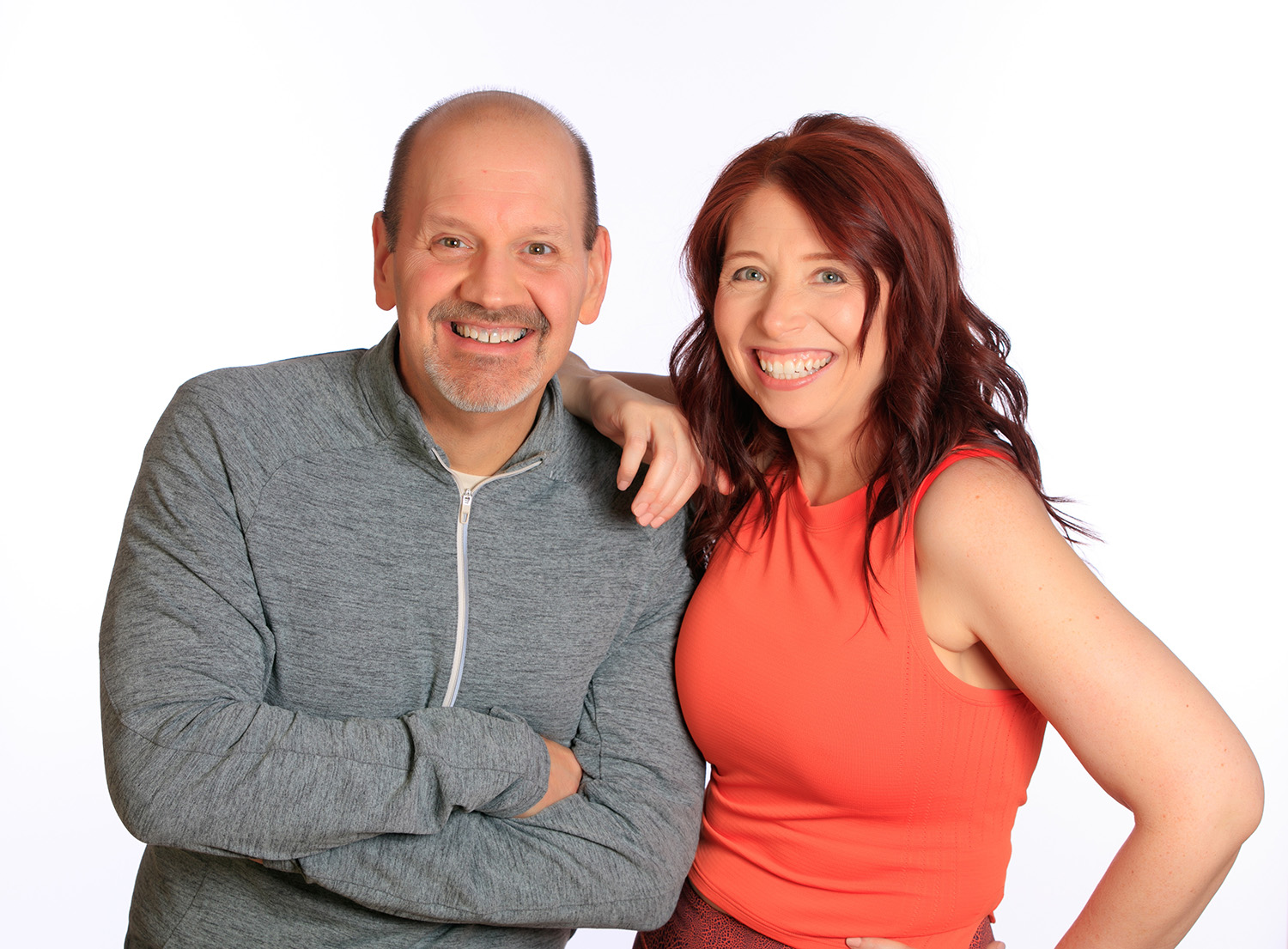
Subscribe
Keep up with all the Peloton news!
